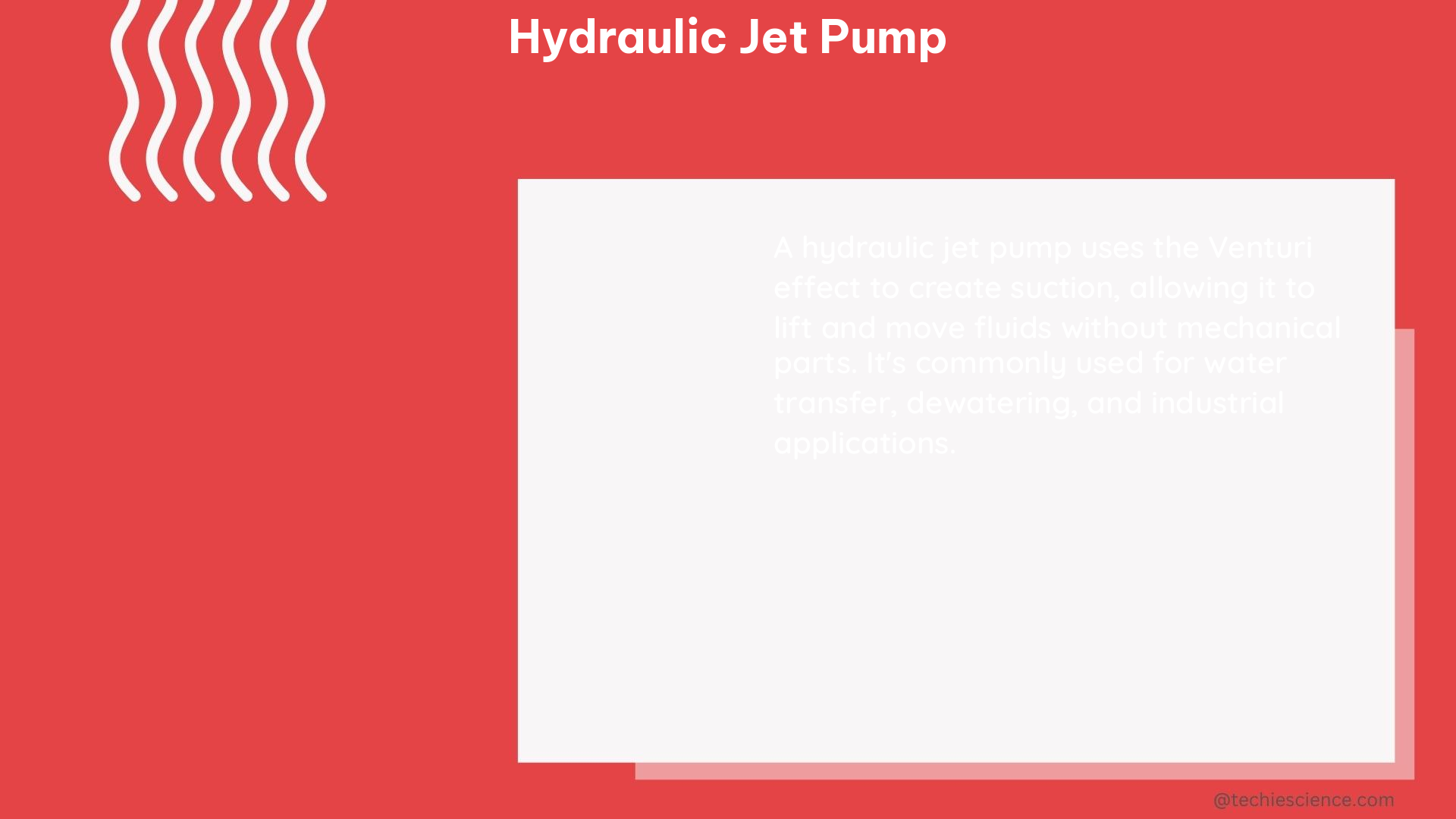Hydraulic jet pumps are a type of artificial lift system that use high-pressure fluid to create a low-pressure zone and lift fluids from a well. These versatile and efficient pumps are widely used in the oil and gas industry due to their simplicity, reliability, and adaptability to different well conditions. However, they also face challenges such as scaling, corrosion, erosion, and mechanical failures that can reduce their efficiency and performance. To optimize hydraulic jet pump system performance, real-time data analysis can be used to monitor, diagnose, and control the system.
Technical Specifications of Hydraulic Jet Pump Systems
The technical specifications of a hydraulic jet pump system can vary depending on the application and the design of the system. For example, a computer model of a pump-circulation system that includes a series of downhole oil jet pumps and a group ground power drive has been developed. The key technical specifications of this system include:
- Design Space: The design space of the system is presented as a combination of 3D models of the inlet and outlet collectors with a parallel connection of jet pumps located between them.
- Productivity Range: The productivity of the ground pumping unit varies in the range from 0.0037 m³/s to 0.01 m³/s.
- Pressure Range: The pressure in the characteristic sections of the jet pump is from 2.26 to 2.53 MPa.
- Computational Model: The computational model takes into account the design of wells, the configuration of the flow path of jet pumps and the state of their working surfaces, the physical properties and flow regimes of interacting flows.
Optimization of Hydraulic Jet Pump Performance

The distribution diagrams of velocities and pressures obtained by modeling are presented in the form of dimensionless regime parameters of jet pumps: ejection coefficient and relative pressure. The conducted studies have established the increasing nature of the dependence of the ejection coefficient of the jet pump on the performance of the ground pumping unit. With an increase in the productivity of the ground pumping unit in a given range, the value of the ejection coefficient increases from 0.12 to 0.52.
The results of computer simulation were compared with the classical method for determining the parameters of mixed coaxial flows, based on the use of the laws of conservation of energy and flow continuity. The deviation of the flow characteristics of the jet pump, obtained using the proposed computer model and the classical laws of hydrodynamics, does not exceed 6.47%.
DIY Hydraulic Jet Pump Manufacturing for Efficiency
In terms of DIY, hydraulic jet pumps can be manufactured for efficiency by properly sizing surface power units to minimize horsepower and using productivity data that should be readily available following the natural flow. For example, in a case study of a well that was converted to jet pump from various other artificial lift methods, the jet pump:
- Increased oil production by 8 BPD with less HP
- Eliminated prior year beam pump repairs in excess of $130,000.00
- Achieved payout in 2.6 months including repair cost reduction
Challenges and Optimization Strategies
Hydraulic jet pumps face challenges such as scaling, corrosion, erosion, and mechanical failures that can reduce their efficiency and performance. To optimize hydraulic jet pump system performance, real-time data analysis can be used to monitor, diagnose, and control the system. This includes:
- Monitoring key parameters such as flow rates, pressures, and temperatures
- Diagnosing issues such as wear, scaling, or mechanical failures
- Controlling the system to maintain optimal performance and efficiency
By addressing these challenges and implementing optimization strategies, hydraulic jet pumps can continue to be a reliable and cost-effective solution for well unloading, particularly in unconventional resource development.
References:
– Real-Time Data Analysis for Hydraulic Jet Pump Systems – LinkedIn
– A discussion on measurement method by using hydraulic jet pump in well testing
– Investigation of the characteristics of an oil jet pump when using a group ground drive
– Well surveys with jet pumps after hydraulic fracturing – IOPscience
– Tally – Hydraulic Jet Pumps Manufactured for Efficiency

The lambdageeks.com Core SME Team is a group of experienced subject matter experts from diverse scientific and technical fields including Physics, Chemistry, Technology,Electronics & Electrical Engineering, Automotive, Mechanical Engineering. Our team collaborates to create high-quality, well-researched articles on a wide range of science and technology topics for the lambdageeks.com website.
All Our Senior SME are having more than 7 Years of experience in the respective fields . They are either Working Industry Professionals or assocaited With different Universities. Refer Our Authors Page to get to know About our Core SMEs.